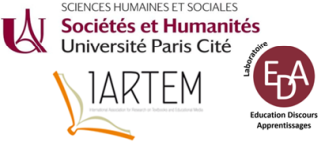The paper forms an introduction to the international anthology, Diversity in learning material. Interpretations of the thematization and representation of diversity in textbooks, learning material and educational practices. The book is planned to be published in the IARTEM series at Peter Lang in 2025. The paper discusses the core questions that the book addresses on diversity and its role in teaching and learning materials as well as practices. While the book contains contributions from ten different countries, the paper will present an example from a Norwegian context to contextualize the core questions addressed in the Introduction and in the book as a whole.
The example from Norway illustrates how conceptualizations of diversity change from curriculum to textbooks and learning material and this interconnection changes over time. We compare different Norwegian curricula that have been introduced in the country over the last twenty years and analyse them in the context of societal change. Norwegian curricula have been modified and updated frequently in the last years. The current curriculum (LK20) was launched in 2020 (Kunnskapsdepartementet, 2019) and is a revision of the LK06 from 2006 (Utdanningsdirektoratet, 2013) , which in turn represented a quite radical revision of the previous one from 1994/97. In this paper we will give an overview of the evolution of Norwegian curricula over the years in regard to the thematization and representation of diversity interpreted in a broad sense and in light of the concept of intersectionality (Björklund & Lindqvist, 2016) and as a “vague concept” (Blikstad-Balas, 2014). We ask whether the curricula reflect the social transformation of the Norwegian society and in particular whether they include thematization and representation of diversity in different ways.
The specific aspect of diversity that we focus on here, is that of migrants, which means pupils with a migration experience either personally or through their parents. Their diversity consists in belonging to a minority community (i.e. background, culture, habits, religion different than the majority), and for having Norwegian as their second language. Since the immigration to Norway has increased considerably during the very last few years, the population has become much more diversified, plurilingual and pluricultural, we want to find out if and how the curriculum has implemented this transformation.
We test out our findings in the different curricula with an analysis of one textbook in Norwegian language and literature for the secondary school. We analyse the textbook in its original version of 2006 created for the LK06-curriculum, and its revision adapted to the new curriculum of 2020 (LK20). Our method in analysing the example of the Norwegian curriculum is text analysis using critical discourse analysis and rhetoric.
References
Björklund, J., & Lindqvist, U. (2016). New Dimensions of Diversity in Nordic Culture and Society (1st ed.). Cambridge Scholars Publishing.
Blikstad-Balas, M. (2014). Vague Concepts in the Educational Sciences: Implications for Researchers. Scandinavian Journal of Educational Research, 58(5), 528–539. https://doi.org/10.1080/00313831.2013.773558
Kunnskapsdepartementet (2019). Læreplan i norsk (NOR01-06). Fastsatt som forskrift. Læreplanverket for Kunnskapsløftet 2020. [Ministry of Education and Research (2019). Norwegian subject curriculum (NOR01-06)]
Utdanningsdirektoratet (2013). Læreplan i norsk (NOR1-05). Læreplanverket for for Kunnskapsløftet 2006. [The Norwegian Directorate for Education and Training (2013). Norwegian subject curriculum (NOR1-05)]
- Poster

 PDF version
PDF version

